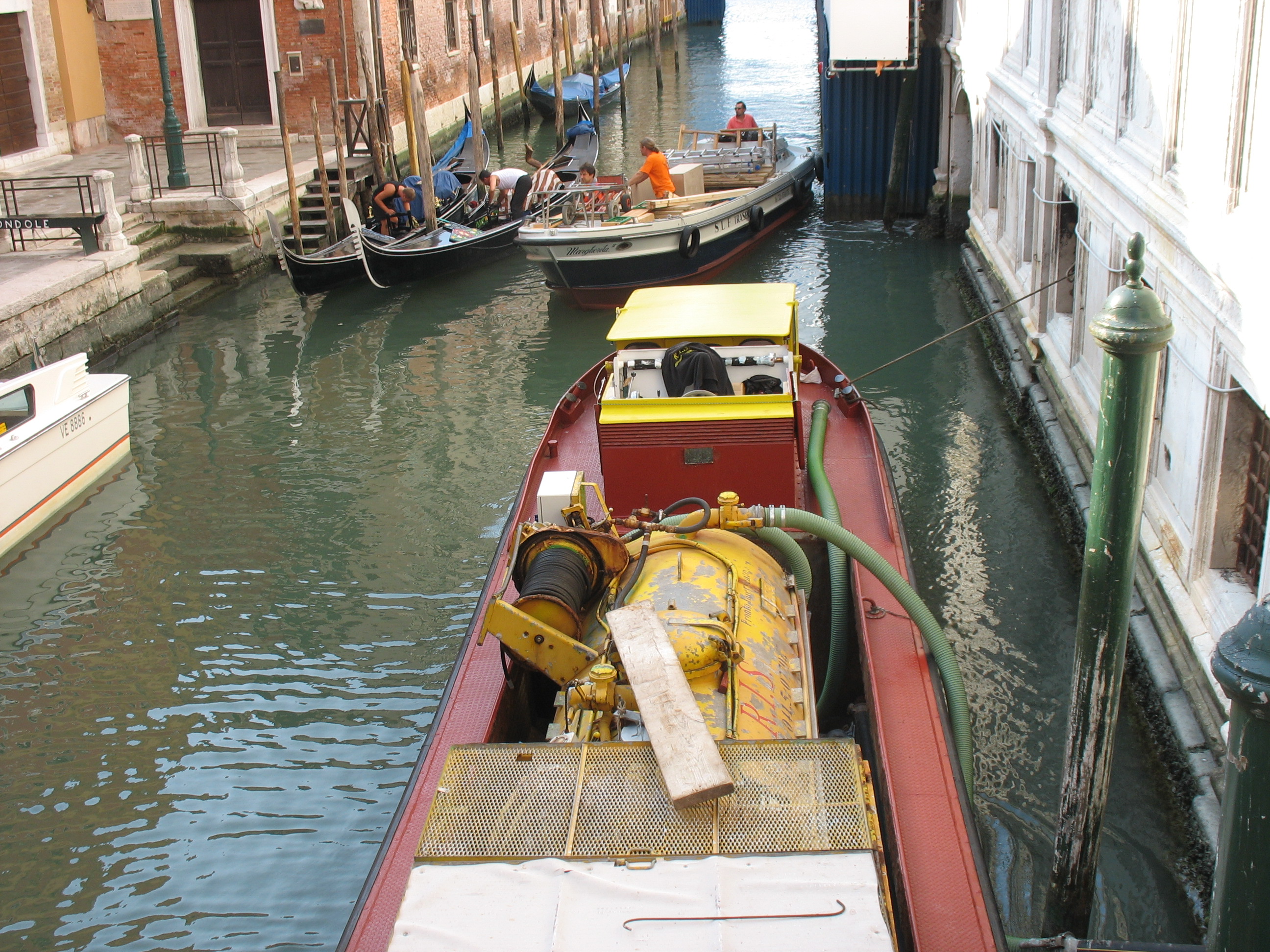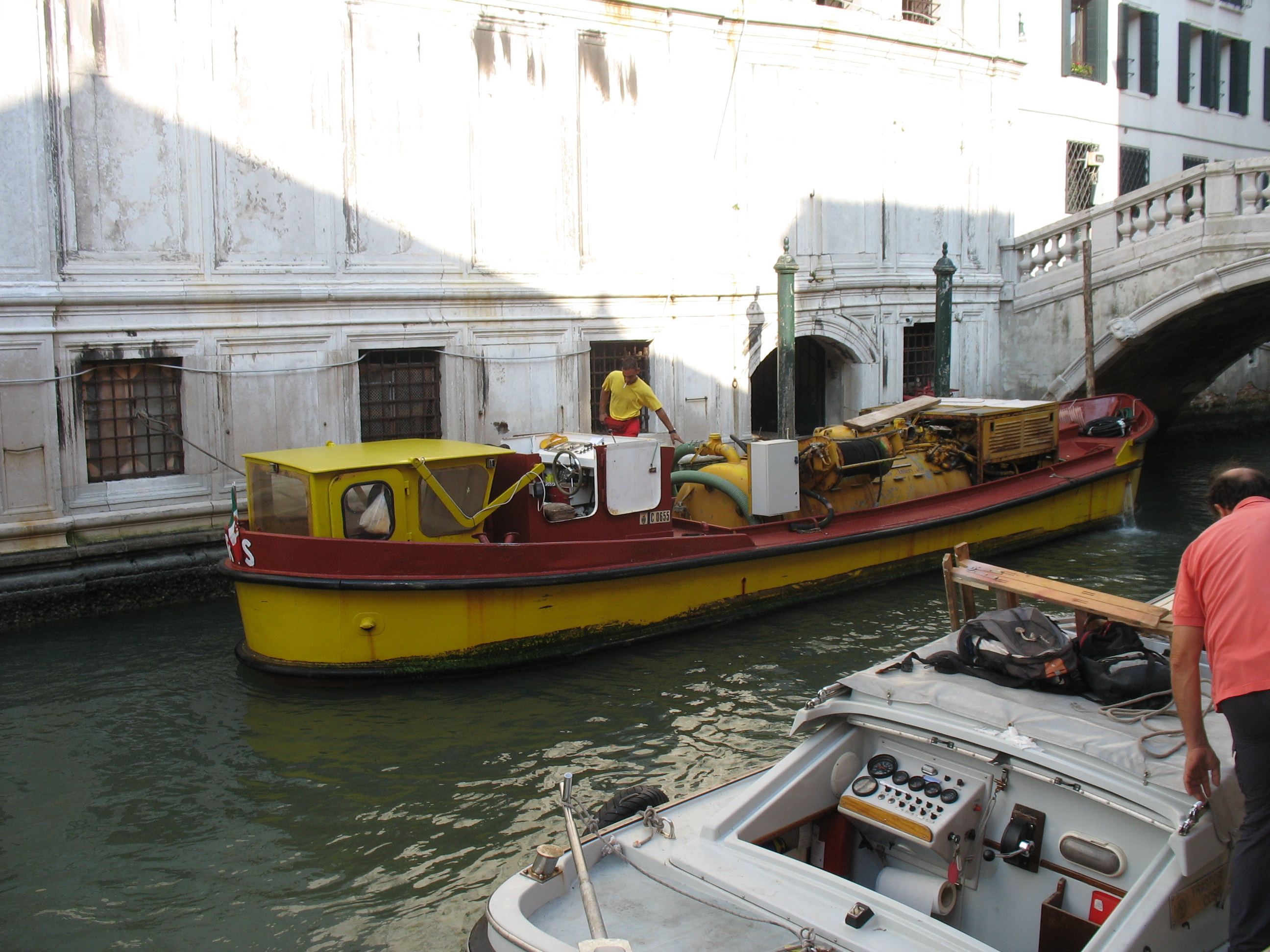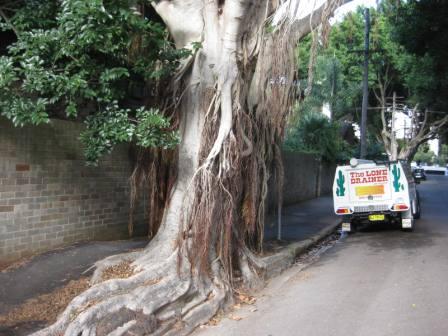Archives
Don’t Let Tree roots Take Over Sewer pipes!
Today’s post is courtesy of Joe from Woollahra Sydney.
Joe had constant problems with the trees around his Sydney home, and tree roots growing in his sewer pipes, blocking them repeatedly. He would need drain cleaning several times a year to cut the tree roots, as the London Plane trees around his home tightened their vice like grip on his sewer pipes and drains. When this happened, the sewer would overflow in his home and on some occasions the raw sewage would come up in his kitchen sink!
Joe found a way to deal with the tree roots in his sewer pipes, to stop them re-growing and blocking his sewer line.
Now, Joe and his wife Elizabeth, both teachers, travelled to South-east Asia to help those less fortunate and during their travels over summer visited Cambodia and in particular the ancient city of Angkor Wat, built in the early 12th century.

Joe at Angkor Wat Beware of tree roots!
Joe was astonished by the power of these tree roots and how they could almost consume these ancient buildings. He couldn’t wait to share this and other images with us.
Joe says, “Don’t let tree roots take over your drains and sewer pipes!”
How do Tree Roots Get in Sewer Pipes And what Damage Can They Cause?
Homes that are connected to a municipal or mains sewer system have their biggest plumbing problems when tree roots have grown into pipes. In days gone by, one of the plumbing services would be called in to clear a blockage in the pipe, getting rid of those tree roots, but the tree roots would regrow and block up the sewer up again.
Regrowth of tree roots and the aggressive action of repeat cleaning earthenware or clay pipes with an electric eel or other drain cleaning equipment, is destructive to the integrity of the pipes. The pipes split, crack and crumble after the roots repeatedly find their way into the pipes. The pipe then has to be replaced at the home owner’s expense.
Tree roots are going to head for the easiest source of water they can find. A sewer pipe is the perfect environment; there is warmth, a constant stream of water and nutrients from degraded food matter. This is the perfect environment for those tree roots to take over your sewer system because the nutrient leakage through these pipes makes it even more inviting for the tree roots, and they just keep coming.
So the cycle continues!
Several things can be done to prevent root intrusion into the sewage system.
Liquid ambar, camphor laurel, ficus (fig) and London Plane trees are the worst offenders when it comes to sending roots to a convenient water source. Do not plant these varieties close to your sewage system.
Calling plumber services Sydney to make sure that you can identify where the roots are, where the crack in the pipes is, and how to finally get rid of your root problem, can be costly. It is a good idea to find a plumber that uses a sewer pipe camera in order to identify exactly where the problem is.
There is a chemical treatment that can kill the tree roots invading the pipes without killing the trees; by using an experienced plumber in Sydney that can provide this plumbing service to get rid of those tree roots, you can save yourself costly repair bills.
The best way to avoid tree roots in your sewer pipes is to remove any young trees that are trying to grow near or above the sewer pipe lines. Call in a professional from one of the reputable plumbing services and make sure that when you do engage that plumber, they do all the diagnostics necessary to identify exactly where the problem is before they set about repairing busted pipes and removing those tree roots that will continue to invade the pipe system.
So you think you’re having a bad day?
Today’s blog post is from Exponential Growth Strategist Dr Marc Dussault. (http://www.MarcDussault.com).
Some days when you think you are home free, there is a trap waiting for you.
Have you ever had a day like that?
Marc takes business growth very seriously, but insists we plumbers take time to have a laugh, even at our own expense.
Thanks for the medicine Dr!

http://www.ExponentialPrograms.com
Blocked Drains…Minimise the Pain
If you have a history of blocked drains at your home, you should read the following to learn more about your drains.
Get a drainage diagram from Sydney Water and keep it handy; it’s part of your contract of sale.
- Tree roots will grow into your sewer, year in year out, through the joints in earthenware pipelines or where they meet PVC pipes. They will come back!
- Don’t ignore gurgling drains or siphoning pan outlets. They are a sure sign of a blockage.
- Investigate smells, they usually mean trouble.
- All plumbing fixtures, WC, basin, sink, bath, laundry tubs, kitchen sink etc. have an S or P trap, or water seal underneath. This trap is not to catch your diamonds (which we have successfully retrieved in the past), it is there to prevent the smell of the sewer coming into your home. If you have a bad smell in the bathroom or laundry it may be because the water seal in the floorwaste has dried out. This means the floorwaste is acting as a direct vent off the sewer and that’s why it smells. So an easy fix is to get a torch and see if the floorwaste is dry; if it is, get a bucket or jug of water, add disinfectant or bleach and tip it in. If the smell persists, it’s a job for the Lone Drainer and Pronto!
- Remove hair from your shower or bath drains. Bin it, burn it or flush it.
- Keep a simple sink plunger in your home tool kit.
- Don’t put sanitary products (tampons, napkins etc) or dental floss down the loo. Dental floss is like fishing line, very tough, it wont break down, it will cause a blockage!
- Only use toilet paper. Not tissues or newspaper. (Try the tissue-toilet paper test. Put them in a bucket and run water over them. See what happens).
- Toilet deodorisers that hang over the edge of your loo are not recommended! They fall in and no one wants to put gloves on and retrieve them, so they flush them down and guess what? They will help put a plumbers kid through uni!
- If you do hire an electric eel and try to clear a blockage yourself, exercise caution, they are a dangerous weapon in the hands of a novice and may cost you more money than you save!
If you need any help with this go to https://www.thelonedrainerandpronto.com.au/blocked-drains.html
Expensive Kitchen Sink Repairs
During an Advanced Business Mastery session I had the pleasure to meet Peter August from Australian Bullion Company, www.austbullionco.com.au.
Peter’s knowledge of Gold and other precious metals, his wealth of experience, and his stories about the mystical and precious metals he deals in, had us all amazed.
In the early 1980s, when the price of gold was around $400 per ounce, I was called to an elderly lady’s home to assist with a blocked sink. I removed all the usual cleaning products from the blocked drain; detergent, sponges and a nest of plastic bags.
Two of the plastic bags were surprisingly heavy to lift. I needed both hands and all my strength to lift these two bags onto the kitchen bench. Inside each of the bags was a gold bar roughly the size of a house brick. I felt like I was in Aladdin’s cave! The elderly lady was standing over my shoulder. She didn’t offer any explanation…. and I didn’t ask.
I went out to the truck to get some more tools to finish the plumbing repairs and when I came back in, the bags and their precious contents were gone.
Based on the standard mass of a gold bar and the price at the time, I estimate that one of those bars would have been worth about $160,000.
Meeting Peter reminded me of this incident. After retelling it to him, he pointed out that earlier this month (September 09) gold had reached a price of US$1000 per ounce, and then estimated that one of those bars would have been worth at least US$400,000.
Not a bad mornings work.

Peter J August, Managing Director of Australian Bullion Company:
Holy S_ _t! A Gondoliers impressions
Today’s post comes courtesy of the World Famous Venetian Gondolier, my mate Giovanni Giudice.
I met Gio in the summer of 07 -08. He was visiting Australia, learning to surf and was escaping the Venetian winter because “business is slow”. Gio was staying in Coogee at the home of a client who funnily enough had a blocked drain. We hit it off straight away; I told him about places to visit along our beautiful coast and Gio in return told stories of the romantic city of Venice, Italy.
Invariably the conversation got back to blocked sewers and blocked drains and how different it would be to deal with a blocked drain in Venice, compared to being a Sydney plumber. Upon his return to Venice, Gio answered my question with a series of photos he took on the way to his gondola one morning.
Below are the photos he sent of a septic boat, pumping the waste from the Palace of the Bishop of Venice.


If any of our readers are lucky enough to be travelling to Venice, ask for Gio’s contact for the best gondola tour of that beautiful city.
The Lone Drainer And Pronto!
At The Lone Drainer and Pronto we’re not like other cowboy plumbers…
We fix your blocked drains, leaking taps and toilets with Silver bullet speed and without making a mess. And before we start, we provide you with our legendary no-surprise fixed quote that blends over 40 years of plumbing experience, technology and training so good…. even other plumbers seek our advice!
(02) 9664 4990 http://www.TheLoneDrainerAndPronto.com.au
Thanks to Dr Marc Dussault for helping us “hit our targets”.
Check him out at http://www.antimimeticisomorphism.com/
Eradicating tree root problems
Tree roots are a very common cause for blocked drains, however the extent of damage that tree roots can cause before a problem is recognised, can vary greatly. To get rid of a tree root problem you must know what condition of the pipes are.
The Lone Drainer and Pronto has a number of weapons in its arsenal to combat those all-invasive tree roots; but in order to decide on the correct solution for the situation at hand, it is good practice to know what is happening with the drain. In many cases we insist on the use a special drain camera to view the location of the blockage and the condition of the connecting pipes.
The drain cameras we use are an enormous cost saver and allow us to determine the condition of underground pipes. Our pipe locating equipment shows us where to dig, minimising the need for large excavations to locate them. This reduces the guesswork and helps us make informed decisions on how to treat your particular blocked drain. In 2009 it makes great sense to use the technology available to us; it helps us help you!
https://www.thelonedrainerandpronto.com.au/plumbing_services.php
PVC Pipes Blocked by Hills Weeping Fig
The Hills weeping fig (ficus microcarpar var.) is a beautiful tree which in some areas provides a shady archway for many streets in our Sydney Eastern suburbs.
But why are the residents of these streets pulling out their hair?
The Hills weeping fig is like Jekyll and Hyde.
Dr Jekyll brings shade in summer; tree lined streets become a breezeway, cooling our homes as their majestic branches cast shade and protect us from the searing summer heat, attracting birds to feed on their fruit twice a year.
But, Mr Hyde is lurking. Those same fruit bring flying foxes…and other mysteries.
My interest in this tree is the power of its root system. Their reach is widespread, sometimes 3 or 4 or more times wider than they are high. The root system will move stone walls, lift concrete footpaths and driveways and of course invade sewer and stormwater pipes. The roots from this tree just keep on coming after they are internally pruned with an electric eel or “Rattlesnake” high pressure water drain cleaner.
Last week we attended to 4 tree root sewer blockages directly caused by the Hills Weeping fig.
The 2 blocked sewer pipes that particularly interested me were PVC sewer pipes.
Why is that interesting, I hear you ask?
Well… tree roots don’t grow into PVC pipes! …..or do they?
The Kensington blocked drain was in an established housing estate about 10 – 15 years old. The townhouse in question had no previous blocked drain history. The Hills weeping fig was about 30 metres away. Its root system had grown up to this house and had actually grown into the PVC pipeline through a screw-on cap that we plumbers call a cleaning eye. The fine roots had grown into the cap thread and multiplied inside the pipe thus causing the sewer blockage.
The Bellevue Hill blocked sewer was similar.
This house was built during the year of Sydney’s 2000 Olympic games after the long term owners, were tired of having blocked sewer pipes every 3 months, and tree roots “growing up through the back of the toilet”, amongst other reasons.
During the rebuild all the pipelines were installed in PVC pipes and fittings. The house finish was state of the art plumbing fixtures, with beautiful sandstone tiles around the outside of the house. All the pipes were concealed! No cleaning eyes! Why would we need access to the pipes as they have all been installed in tree root proof PVC? The nearest fig tree was 30 odd metres away.
Well, what started as a simple blocked floorwaste, grew to removing that beautiful toilet suite to clear the blocked sewer pipe. We used the “Rattlesnake” high pressure water drain cleaner to remove tree roots from the blocked pipeline. When the blockage was cleared we carried out a camera survey of the pipeline. About 14 metres downstream the camera showed the remnants of the cut tree roots, but just as important, our drain camera survey showed the PVC pipe had been squashed. What was a round internal pipe, was now oval shaped with a crack in at least 1 of the fittings.
Who said tree roots don’t grow in PVC sewer pipes?
Beware Mr Hyde!
https://www.thelonedrainerandpronto.com.au/vaporooter.php

Hills Weeping Fig Tree
Vaporooter Guarantee
Blocked drains are a major problem – any way you look at it!
Tree root invasion of sewer lines is a common cause of such blockages — BUT, when left unattended, tree roots will cause major damage to your sewer pipes (which, as you might imagine, can be far more troublesome than just any old blockage, not to mention the resulting sewerage backflow).
Replacing broken or collapsed sewer pipes can be a VERY expensive exercise…
Thankfully, there is a solution!
The best solution available is Sanafoam Vaporooter. When applied to sewer lines correctly, the foam coats the interior of the affected pipes, seeping through any fine cracks which may have been created by the invading tree roots, and killing off any roots it comes into contact with. Vaporooter is so effective, that we guarantee the results for 12 months…
Vaporooter: The BEST solution for tree roots in sewers!
https://www.thelonedrainerandpronto.com.au/vaporooter.php
What Happens When Tree Roots Grow In Sewer Pipes
The intrusion of tree roots in sewer pipes is probably the most destructive single element that faces those maintaining a sewer collection system today.
Sewers are ageing expensive assets that only attract public attention when they fail. There are more than 35,000 kms of water and sewer pipes in Sydney and 60% of all collection systems are made up of pipes with a diameter of 9 inches (225 mm) or smaller. The potential for tree root intrusion to inhibit flows, produce blocked drains and damage valuable pipes, is enormous.
Tree roots normally do not grow underwater and seldom cause problems where ground water covers the pipe. But in most areas, this is not the case.
Tree Roots Grow One Cell at a Time
When a seed germinates, it adds one cell at a time toward the best environment from which it might extract nutrients and moisture. The growing point of a tree moves best through loosely cultivated soil.
The most common practice used to lay sewer pipes is in an open trench. The back-filled soil offers a good growing medium for tree roots. Because the flow in sewer pipes is a higher temperature than the soil, this causes a condensation to appear on the crown of the pipe.
As the warm moisture from the sewer pipe evaporates up through the soil, the vapours offer an excellent trail for the tree roots to follow. If a vapour leak exists in the pipe, the roots concentrate its efforts at that point. Since some pipe joint compounds are of nutrient based material themselves (like rubber rings or sand cement mix), the root may entirely girdle before entering the pipe.
Roots Allow Accumulation of Debris
Once inside the sewer pipe, the root takes on the appearance of a “veil” or “horse tail” type structure. If flows in the pipes are fairly constant, the root mass hangs down like a veil to the normal flow level where they accumulate deposits of grease, slime and other debris.
Conventional methods of removing tree roots by cutting with an electric eel or a “Rattlesnake” high pressure water drain cleaner tend to increase regrowth; similar to pruning a tree. Removing tree roots inside the pipe solves the immediate problem of clearing the blocked drain, but does nothing to retard the tree root regrowth or destroy the tree roots outside the pipe.
This removal, regrowth and removal cycle of cutting and tearing roots can destroy the structural integrity of the pipe.
Herbicide Fumigants
Herbicide fumigants present the most effective method to destroy tree roots and inhibit their regrowth without affecting the above ground plant life. Vaporooter is a root control herbicide that enters the sewer as a foam. Only tree roots within the pipe and a short distance outside the pipe are affected. Trees and shrubs immediately above ground are not harmed in any way.
Symptoms of a Blocked Drain
As Easter approaches we make plans to get together with our family and friends, so there is constant use of kitchen and bathroom facilities. To make the holiday break memorable and keep an eye out for some of those vital symptoms that might indicate you have a slow or blocked drain rather than having to call an emergency plumber to rescue you and your family from a blockage.
Keep an eye out for the following:
- The excessive rise or fall of the water level in your toilet. We call it syphoning, and it comes with a Glug Glug Glug.
- Slow draining water or ankle deep water in the shower or bath.
- Swarms of small flies or sewer flies around smelly drains.
- Your kitchen sink, waste disposal unit or dishwasher are slow to drain.
- Toilet paper or dirty water around your sewer surcharge gully in the garden or yard.
- Dirty water leaking from a retaining wall or garden bed that conceals sewer pipes.
These are signs of a blockage, and your pipes have been trying to tell you, that all isn’t well.
Because you have extra guests using the facilities, if there is a problems in your pipes it may likely show signs then that you are able to pick up.
So have a look around you home for the symptoms and please do not ignore them.
Have a peaceful Easter.
I hope the Easter Bunny comes!
Fixing a Blocked Drain with The Electric Eel!
I asked Bruno, the plumber, to attend to a blocked drain at a well-known food shop in Bondi as I was on crutches and could not do so myself.
Whilst Bruno was fixing the blocked drain he rang me to say that he couldn’t get the electric eel out of the drain pipe and could I come and help. My wife (who was 8 months pregnant at the time) drove me to the site and I limped in and found Bruno with the electric eel over an access drain with the eel cables stuck fast!
“What happened” I asked. Bruno said, “The eel cables just kept going in, so I kept on putting them in”.
“How much cable is in that hole”? I asked. “About 45 feet” (15 metres) he replied!
“How far to the blocked toilet”? I asked” “About 10 feet” he replied! I cringed!
I held on to my crutches and tried to help Bruno drag that electric eel out of that pipe. It wouldn’t budge!
Fortunately for us, the house behind the shop was vacant …. except for the “beast” that had been unleashed in the bathroom. The extra 35 feet of eel had come out through the back of the toilet, done a complete circuit of the small bathroom, then out the door and down the hallway towards the kitchen. The spinning action of the eel had allowed it to grab the old carpet hall runner in a “death roll”. When we had tried to wrestle the eel from the pipe, the old carpet had got stuck fast!
We were of course able to salvage the situation, had the carpet cleaned, replaced the loo and successfully cleared the blockage.
Some 12 years later when I have a coffee with Bruno (who now has his own very successful plumbing business) and we laugh about our daily plumbing lives, telling those gathered about the dangers of the electric eel, Bruno still blushes and says “David, it’s just The Nature of The Beast“!
Plumbing Tip: Don’t keep putting your resources into a black hole!
https://www.thelonedrainerandpronto.com.au/plumbing_services.php
